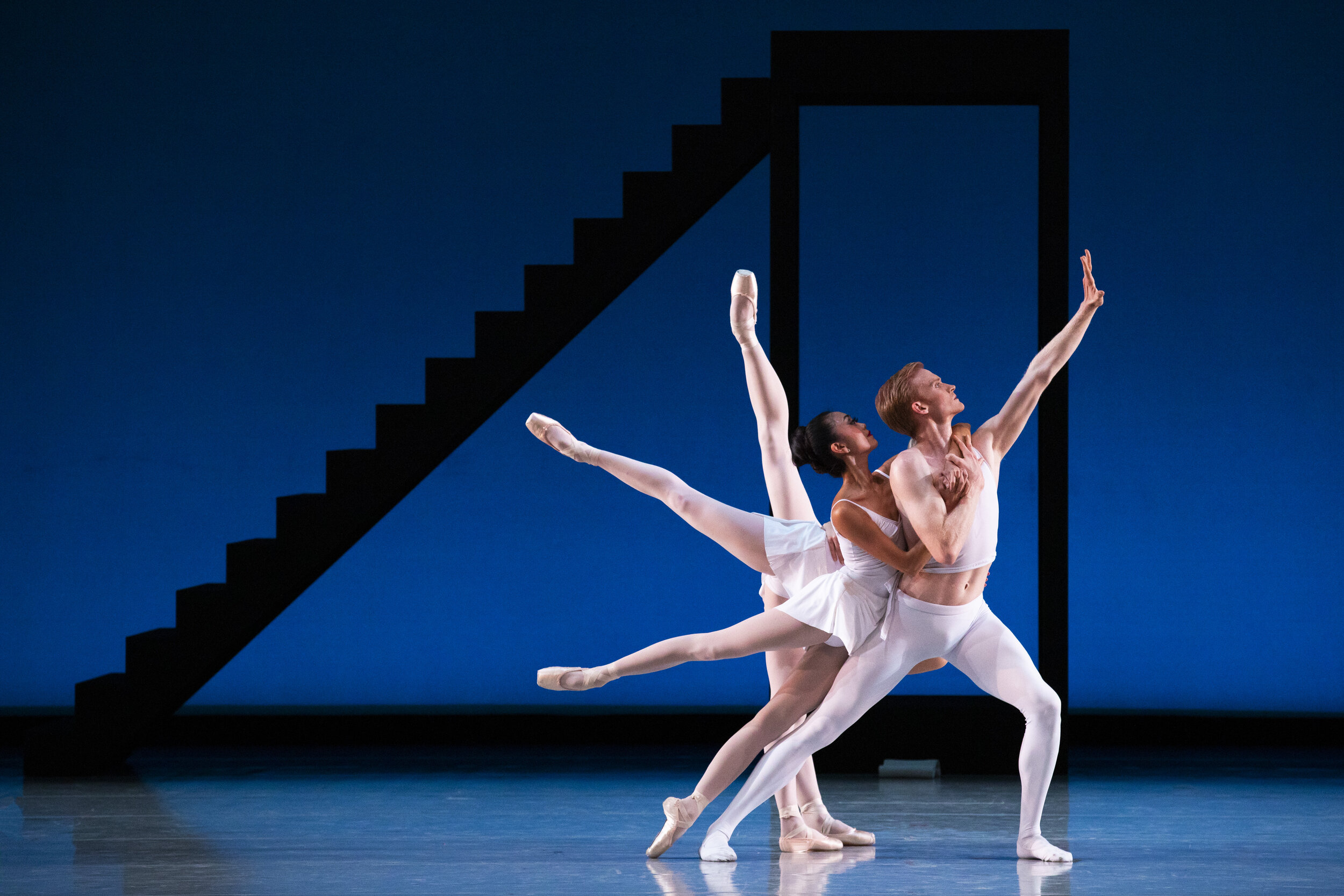Axis Dance Company aims to change the face of dance and disability. The company of disabled and non-disabled dancers recently spent a week at the University of Utah, hosting master classes and discussions on fostering inclusivity within dance pedagogy and performance. On November 8, the company performed at Kingsbury Hall as part of the UtahPresents season.
The first act of the performance consisted of two dances, both of which employed familiar movement vocabularies of contemporary dance. Featuring one dancer in a wheelchair and two bipedal dancers, one of whom was missing an arm, the opening trio had an easeful energy and was full of interplay between softness and strength. Clad in gold-fringed costumes reminiscent of something Tina Turner would wear in her heyday, the three spun and wheeled around each other to “Clapping Music” by Steve Reich and a violin solo by Bach. The dancer in the wheelchair often juxtaposed the fluidity of the rolling chair by making very sharp and angular arm movements in the air. They spun the chair in several rotations as the other two dancers did pirouettes that transitioned to the ground for shoulder rolls and leggy floorwork. The floorwork dancers made a pattern on the ground with their legs that matched the other dancer’s arm movements in space. The juxtaposition of the movement vocabulary with the music and costume selections was a little curious, but the choreographer’s message was clear: all dancers can express the same movement intention, even if it’s through the use of differing body parts and/or with the help of an extra apparatus.
The second dance, a work for all six company members, displayed the dancers’ extreme athleticism. They dove through the air and performed flips on the ground and over wheelchairs. They formed a series of well-balanced tableaux of varying levels – taking advantage of the different levels of space that their bodies occupied – in which they performed strong, quick gestures with their upper bodies. The energy and movement quality shifted unexpectedly towards the end of the piece and we were gifted two intimate duets that had the sensual styling of Jiri Kylian’s Petit Mort or Alejandro Cerrudo’s Second to Last. Both duets were comprised of one partner in a wheelchair and one bipedal partner, each of whom took turns sensuously weaving around each other. Given that our society often de-sexualizes disabled bodies and questions the capabilities within interabled relationships, these duets were extremely insightful and were the highlight of the piece.
During intermission, I wondered about inclusivity in codified techniques (phrasing taken from company member Lani Dickinson’s biography). Do codified movements retain their names as their mechanics are adjusted for disabled bodies? Is there terminology for movements created for and by disabled dancers that non-disabled dancers in non-inclusive companies aren’t aware of? My thoughts were interrupted as the house music got louder and the lights in the house went dim. Not the typical transition from intermission into a second act, but fitting for what came next – a dance-theater piece that explored homelessness through a surrealist lens.
The piece’s opening image was a collection of cleverly worded cardboard signs, characteristic of those held by homeless individuals in hopes of receiving aid from passersby. The dancers languidly entered and exited the stage in mismatched costume pieces, seeming dejected yet full of whimsy all at once. It eventually became clear that we were witnessing the character of Alice slip in and out of her Wonderland and also the poverty-stricken streets of California. The most striking image was a dancer dressed in camouflage with a sleeping bag around their legs and a cigarette hanging from their lips doing the worm with Alice seated on their back – a clever parallel between a homeless veteran and the hookah-smoking caterpillar from Lewis Carroll’s story. In comparison to the first two dances, this piece relied less on familiar dance vocabulary and there were fewer textbook choreographic structures. It instead leaned heavily into the dancers’ pedestrian or vernacular movements, and used space in a more natural and organic way. With this change in approach, I saw a company of people, momentarily forgetting that “disabled” and “non-disabled” were ever necessary distinctions amongst them. Which brings me to my final thoughts:
I support fighting for inclusivity in systems that inherently (though not always maliciously) exclude marginalized groups, but I also value working outside of those systems. We can ask to be a part of systems that weren’t created with us in mind, or we can create new systems that better serve us. I think the first two dances did the former, while the final dance did the latter. It was nice to see a range of bodies participate in highly stylized forms that have historically been exclusionary. However, it was exciting to imagine how dance can transform if companies like Axis forge forward with new ideas of what dancing bodies can do and look like, instead of attempting to fit all bodies and abilities into previously formed models.
Alexandra Barbier is a dance artist and performance-maker. She is a modern dance MFA candidate at the University of Utah and has taught courses on creative process, queer performance art, and dance in culture.





